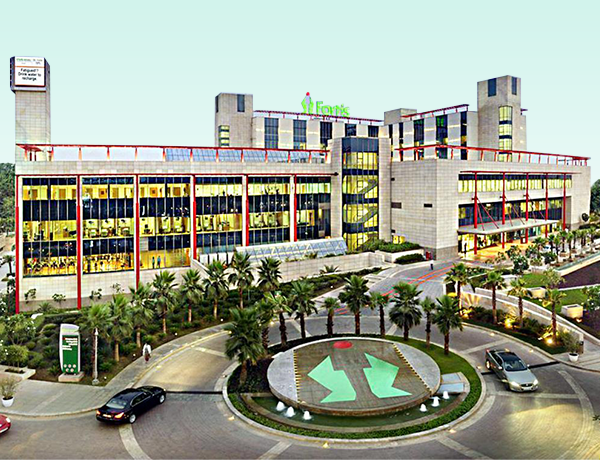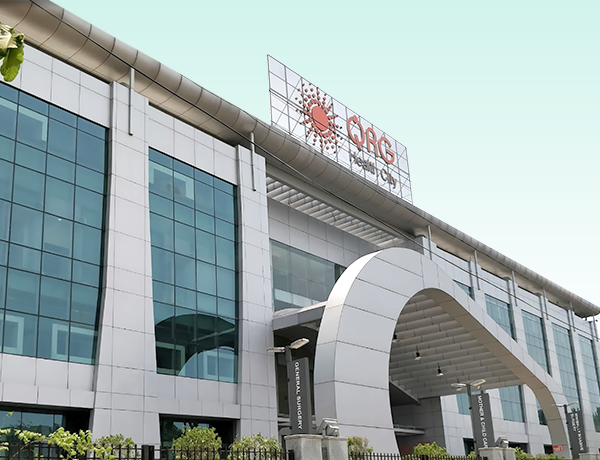Thrombectomy
A thrombectomy is a surgery to remove a blood clot from a blood vessel (artery or vein). A blood clot, also known as a thrombus, can interrupt the blood flow to your extremities and/or organs that can be limb or life-threatening. Some of the most common places for blood clots to occur are your legs, arms, intestines, brain, lungs, and heart.

Who Needs Thrombectomy
Thrombectomy is typically recommended for individuals who have developed blood clots that are causing symptoms or posing a risk of severe complications. It is commonly used in cases of acute ischemic stroke, deep vein thrombosis (DVT), pulmonary embolism (PE), and peripheral artery disease (PAD).
When to See a Specialist
If you experience symptoms such as sudden numbness or weakness on one side of the body, severe chest pain, difficulty breathing, or pain and swelling in the legs, it’s important to seek medical attention immediately. These symptoms may indicate conditions that could require a thrombectomy.
Procedure
- Imaging and Diagnosis: The specialist performs various diagnostic tests, such as ultrasound, CT scan, or angiography, to identify the location and extent of the blood clot.
- Preparing for the Procedure: The patient may be given medication to prevent blood clotting during the procedure.
- Inserting the Catheter: A small incision is made, and a catheter is inserted into a blood vessel, usually in the groin area. The catheter is guided to the site of the clot using imaging techniques.
- Clot Removal: Different techniques may be used to remove or break down the clot, such as suction, aspiration, mechanical devices, or medication delivered directly to the clot.
- Restoring Blood Flow: Once the clot is removed or dissolved, blood flow is restored, reducing the risk of complications.
Road to Recovery
After a thrombectomy, the patient may be monitored in a hospital setting to ensure proper recovery. Recovery time varies depending on the underlying condition and the extent of the procedure.
Risk Management
Thrombectomy is generally safe, but like any medical procedure, it carries potential risks such as bleeding, infection, damage to blood vessels, or complications related to anesthesia. Your healthcare provider will discuss these risks with you before the procedure.
Benefits of Thrombectomy
- Rapid Treatment: Thrombectomy quickly removes blood clots, preventing further damage and potentially life-threatening complications.
- Improved Blood Flow: Restoring blood flow reduces the risk of tissue damage and helps prevent long-term disability.
- Enhanced Quality of Life: Thrombectomy can alleviate symptoms, improve overall well-being, and prevent future complications.
Frequently Asked Questions
1. Is thrombectomy a surgical procedure?
Thrombectomy can be performed through minimally invasive procedures, such as catheter-based techniques, reducing the need for traditional surgery.
2. How long does a thrombectomy procedure take?
The duration of the procedure varies based on factors such as the location and size of the clot. It can take a few hours or longer.
3. Can thrombectomy completely eliminate the risk of future blood clots?
Thrombectomy can effectively treat existing blood clots, but individuals with certain risk factors may still be at risk for developing new clots.
4. What is the recovery time after a thrombectomy?
Recovery time varies based on the type of procedure and the individual’s condition. Some patients may be able to resume normal activities within a few days, while others may require longer recovery periods.
5. Are there alternative treatments to thrombectomy?
Depending on the condition and clot location, alternative treatments like anticoagulant medications may be considered. Your healthcare provider will determine the most appropriate treatment approach for your situation.
Treatment Plans
- Trauma & intensive care $59
- Aged Care $29
- Community Services $25
- Diagnosis & Investigation $48
- Medical & Surgical $82
- Mental Health $74
- Rehabitation $24
- Specialised Support Service $19
- Trauma & intensive care $59
- Aged Care $29
- Community Services $25
- Diagnosis & Investigation $48
- Medical & Surgical $82
- Mental Health $74
- Rehabitation $24
- Specialised Support Service $19
Treatians As The Best Choice
Treatians understand that seeking medical treatment abroad can be a daunting experience for patients and their families. That’s why the company offers end-to-end support to its clients, from the initial consultation to post-treatment care. The company provides personalized treatment plans that are tailored to meet the individual needs of each patient, and its team of dedicated professionals is always on hand to provide guidance and support throughout the entire process. Contact us at +91-7982312582
, drop your email [email protected]
- Trauma & intensive care
- Aged Care
- Community Services
- Diagnosis & Investigation
- Medical & Surgical
- Mental Health
- Rehabitation
- Specialised Support Service
Service Recipient Says

Oxmox advised her not to do so, because there were thousands of bad Commas, wild Question Marks and devious.
Kolis Muller NY Citizen
Oxmox advised her not to do so, because there were thousands of bad Commas, wild Question Marks and devious.
Kolis Muller NY Citizen


















Oxmox advised her not to do so, because there were thousands of bad Commas, wild Question Marks and devious.
Kolis Muller NY Citizen